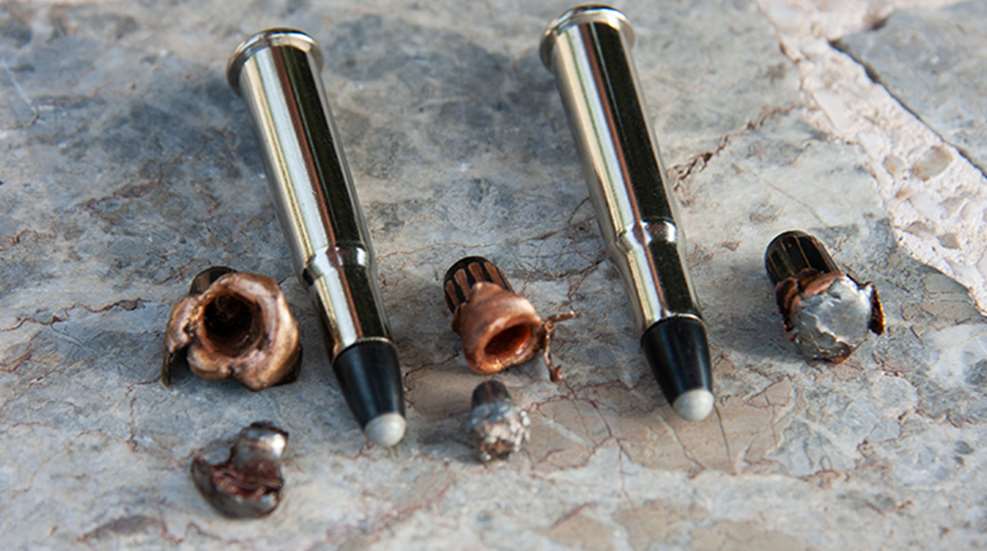
Not long ago I was in a South Dakota hunting camp when a veteran hunter—a hunting TV personality, no less—was bemoaning the fact that although he thought he’d hit a giant Yukon moose where he’d aimed, he’d failed to recover it. This story, one wherein an animal is wounded but unrecovered and left to suffer and waste, is perhaps the worst thing about hunting. But sometimes it can be prevented simply by choosing the right bullet for the job.
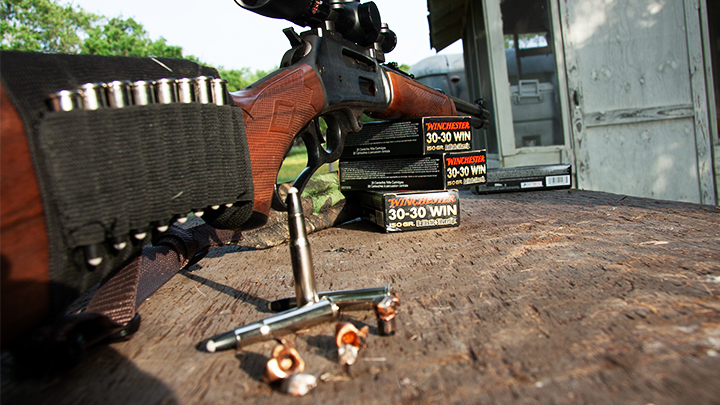
Respectfully, I asked the hunter what caliber he used. He told me a .300 Win. Mag.—certainly enough gun if shot placement is adequate. Next I asked him where he hit the moose, and he told me he hit it in the front shoulder, broadside. He said he could see blood as it ran off, but it never went down. Then I asked the range at which he shot the moose, and he told me 45 yards. Beginning to sense the problem, I asked him what bullet he used, and he told me he used a Nosler Ballistic Tip. Not to sound like Sherlock Holmes here, but it was exactly what I suspected: Not anticipating such a close-range shot with such a high-velocity caliber, he had used a bullet too fragile for the task.
You see, the shoulder of a 1,500-pound bull moose is one of the toughest obstacles for a bullet to penetrate in the entire animal kingdom. His .300 Win. Mag. shooting a 180-grain, .30-caliber bullet was traveling at about 3000 fps when it struck the moose’s shoulder bone. It takes a specially made bullet to hold up to this level of violent force. The Nosler Ballistic Tip, while a great, accurate bullet in its own right, was not designed for this extreme task. The bull was not recovered because it disintegrated on the moose’s shoulder and failed to penetrate into the thoracic cavity. If it would have, the bull would have died swiftly.
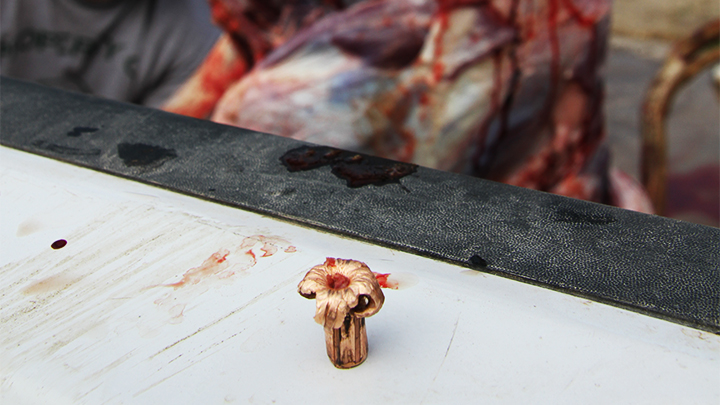
Keep in mind that if the bull would have been shot at 200 yards, it might have turned out better for the hunter, because the bullet likely would have shed enough velocity that it might not have come apart at impact; or had he hit the bull behind the shoulder rather than on it, the bullet almost assuredly would have penetrated both lungs and resulted in quick death. But that didn’t happen, and the lesson is, hunters should plan for the worst case scenario when choosing a bullet.
Terminal Ballistics
A bullet’s effect on any object it strikes—what happens after impact—is called terminal ballistics. In order to anticipate a bullet’s terminal ballistics, you must first know your target. Generally, game falls into four classes: Small game like varmints and rabbits up to coyote-sized animals; medium-sized game like deer, small black bears and antelope; large, heavy game such as moose, elk, big African antelope and big bears; and large dangerous game such as elephant, hippos and rhino.
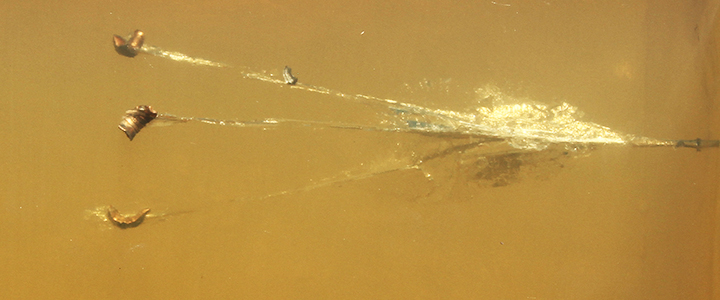
Next, you must consider the caliber chosen—mainly paying attention to its velocity. For example, you don’t need the toughest bullet available if you choose a 6.5 Creedmoor that leaves the muzzle going a modest 2650 fps. Even if an animal is taken at close range, most modern, premium bullets will hold together at this velocity. But if you choose a .257 Weatherby Magnum for example, that can generate speeds in excess of 3300 fps, any bullet you choose should be robust enough to withstand extreme impact.
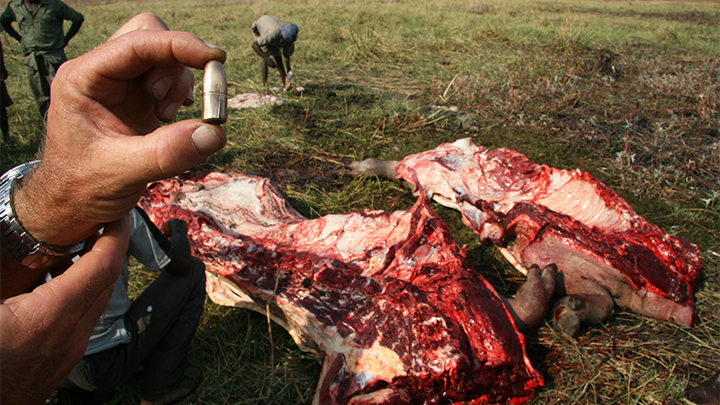
Finally, you should consider the shot scenario in which you believe most likely to occur. For example, mule deer hunting of the plains of Wyoming where a 300-yard shot is to be expected is much different than hunting deer from a treestand in the woods where a 30-yard shot is the norm. For scenarios that may require a long shot, accuracy is paramount, so you should choose a premium boattail bullet with a high ballistic coefficient (BC) that slides through the air efficiently and retains its velocity better than other bullet styles. Conversely, for short-range scenarios like bears over bait, the toughness of a bullet is more important that its precision accuracy and wind-bucking characteristics, so this is where heavy, Spitzer-style (flat-based) softpoints shine.
Basic Bullet Construction
Basically, bullets are made for several different purposes, and none can be the best at everything. Some bullets meant for targets, varmints or small game are designed for pinpoint accuracy; many of them expand so violently that they almost explode when they strike. Because the game is small, there is little chance of the bullet failing to penetrate into the body cavity, so using a bullet that fragments will often kill the small animal instantly—while also reducing the chance of ricochet. These bullets expand to several times their original diameters and even come apart, therefore they don’t often penetrate very well. Because the bullets feature thin copper jackets that can be made extremely uniform—and often feature boattail bases—they are often inherently accurate.
Other bullets are made for penetration but do not expand much. The most extreme example of this is a full metal jacket (FMJ) bullet. This means the bullet has a lead core that is fully encased in a hard copper jacket to keep the softer lead from deforming or coming apart upon impact. With enough speed and mass (force), such a bullet can penetrate through metal, but in doing so, it punches a hole only the size of the caliber itself because the metal jacket prevents it from expanding. FMJ bullets are not advisable for hunting because they can zip right through an animal and wreak only minimal internal tissue damage. Typically the animal will expire, but it might run a long way before leaving little or no blood to follow while doing so.
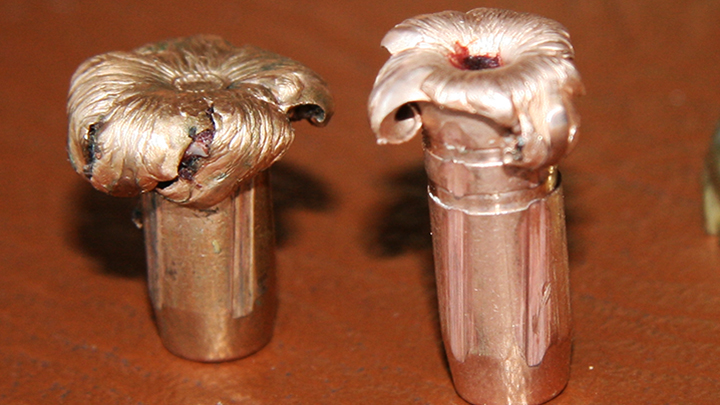
A third type of bullet is a blend of both these bullet styles. These hunting bullets, called “controlled expansion bullets,” are specially designed to expand to a certain point—depending on the speed of the bullet—yet hold together so they maintain momentum and penetrate adequately even if they encounter heavy resistance. Most feature a lead core that is jacketed by thick copper at the bottom which gradually tapers toward the tip to allow the frontal portion to “mushroom” while keeping the shank and core intact to drive that mushroom through its target. Some of these bullets feature lead cores that are “mechanically” locked to their jackets (think Nosler Partition and Remington Core-Lokt), while other bullets feature cores that are chemically “bonded” to their jackets. The idea is to prevent core and jacket separation upon impact so the bullet retains as much of its original weight as possible so it can deliver all of its resulting energy to the target.
Other bullets are made of all copper so there is no lead core to come apart. The only downside to these “monolithic” bullets is that copper is lighter than lead, so to be equal weight, they must be made longer. This could be good or bad for accuracy, depending on the rifle. Most of these bullets have hollow frontal cavities designed to peel back for some level of expansion.
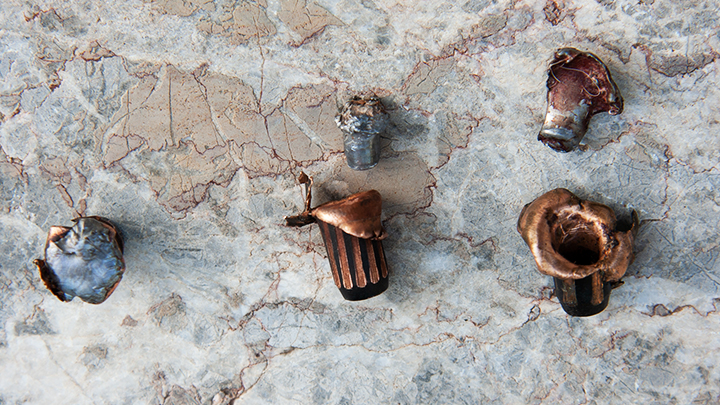
Plenty of newer, controlled-expansion bullets feature polymer tips that are touted to increase the bullet’s aerodynamic traits and also initiate expansion of the bullet’s frontal portion upon impact. Mostly, however, these plastic, colorful tips make the bullet look more appealing to hunters shopping for bullets.
Finally, for very specialized situations when hunting the world’s biggest and most dangerous game, such as elephant, hunters sometimes choose “solid” bullets that absolutely will not come apart upon impact, because if they did come apart on, say, a charging elephant’s massive shoulder, and failed to reach vitals, that failure could easily result in the hunter’s very violent death. But because this is a primer on bullet basics, I’d expect anyone who hunts elephants or other dangerous game to do much more in-depth study on the subject.
The Bullet Choice Dilemma
The problem in trying to choose a single “best bullet” for your purpose is that there are dozens of controlled expansion bullets on the market, and all of them perform slightly differently. Some, like the Nosler Ballistic Tip Hunting, Winchester Ballistic SilverTip, Hornady SST (Super Shock Tip) and a handful of similar bullets lean toward expansion over penetration, while others, like the all-copper Barnes TSX, Hornady GMX, Winchester XP Copper Impact, Federal Trophy Copper and others lean toward penetration over expansion.
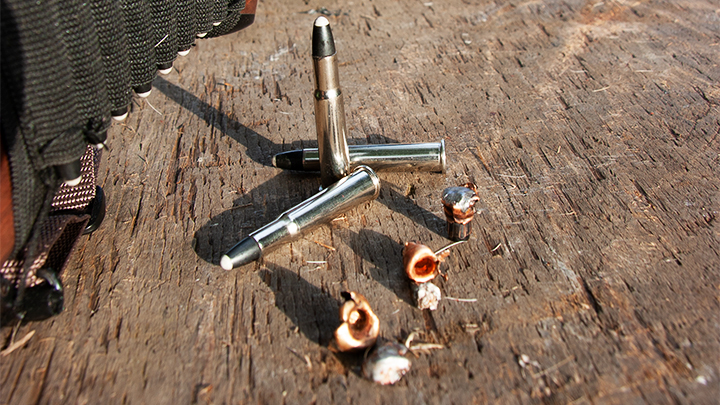
In general, bullets that lean toward expansion more often cause dramatic, instant kills, but they can also occasionally wound if the shot angle is too extreme or the animal is too large and they fail to penetrate to the vitals. Conversely, bullets that lean toward penetration tend to fail less, but they can also require more blood trailing, because they tend to do slightly less internal damage, and could possibly allow an animal to run farther before its death.
That said, I tend to prefer tougher bullets that almost always penetrate deeply to softer ones, because I like the confidence in knowing that the bullet will penetrate even if I must take a less than ideal shot angle—maybe through both shoulders—at long range, short range or anywhere in between. Other hunters I trust, however, lean toward softer bullets, so there is no absolute best answer here—at least until you shoot multiple game animals with your rifle and see what works for you and your style of hunting.
Accuracy
Due to an individual rifle’s idiosyncrasies, it’s very difficult to say if one bullet is more accurate than another, although some bullets certainly have better reputations for accuracy than others. Some pure target bullets, such as Sierra’s MatchKing and Berger Bullets are made for maximum accuracy, but are not all that great for hunting large game. Nosler’s AccuBond has a really good reputation for its accuracy and toughness. I’ve found Barnes’ tough-as-nails TSX to be very accurate in most of my rifles. But the only real way to tell if a particular bullet is accurate in your rifle is to actually shoot it in your rifle and measure the groups.
The Perfect Bullet for Your Rifle and You
If you’re deer hunting, for example, most any controlled-expansion bullet will work well. That’s because deer are thin-skinned, average about 150 pounds and are generally not overly tough to kill. The Nosler Ballistic Tip Hunting, Remington Core-Lokt, Winchester Power Point and Power Max Bonded or any of about a dozen other similarly constructed bullets that lean toward expansion are perfect for this application.
For large game protected by big heavy bones that can destroy thinly jacketed bullets, hunters should generally lean toward penetration over expansion—especially if your rifle is a magnum caliber known for its ultra-fast velocity. Tougher bullets will hedge against fragmentation. Similarly, if you plan to hunt black bears over bait where shots will be tight, you should also lean toward penetration. So for moose, bears, large African antelope and other big, heavy game, a controlled expansion bullet like the Barnes TSX, Hornady GMX, Federal Trophy Bonded Tip, Swift A-Frame, Nosler Partition and other similar bullets are recommended.
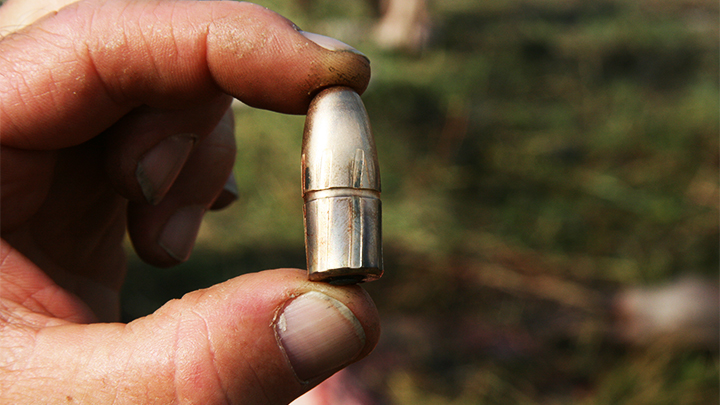
If you anticipate long-range shots at antelope, mule deer, sheep or similarly sized animals, you should probably lean toward expansion to anchor the animal swiftly. However, you should focus on finding such a bullet that is supremely accurate in your rifle, because if you hit an animal in the wrong place or miss it entirely, it doesn’t matter what bullet you use! Nosler’s AccuBond, Swift’s Scirocco II and Hornady’s ELD-X come to mind for their reputations for supreme accuracy.
For coyotes or prairie dogs with a .223? Hornady’s violently expanding V-Max, Winchester’s Ballistic Silvertip or even a target-leaning bullet like a Sierra GameKing is perfect.
In all cases, choose several loads featuring bullets that were designed for your intended purpose, test them in your rifle, and choose the one that proves most accurate. If you have a problem with it in the field, try something else. If it works for you, stick with it!
Conclusion
Remember, your bullet is the only thing that actually imparts your will on the game animal you’ve so painstakingly hunted. Therefore, after you pull the trigger the success of your hunt depends on your bullet. So don’t skimp. Buy the best bullet for the game and scenario chosen and the one that performs best in your particular rifle. Then be confident that if you do your part by delivering exactly where you aim—the bullet will do its job. We owe it to the animals we hunt.



































